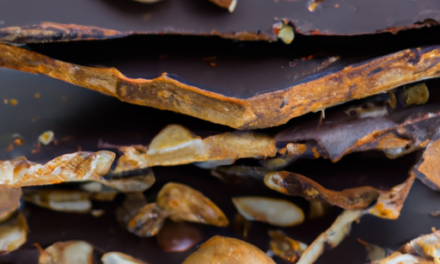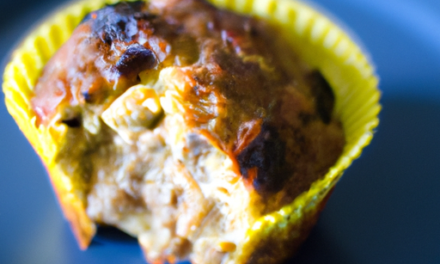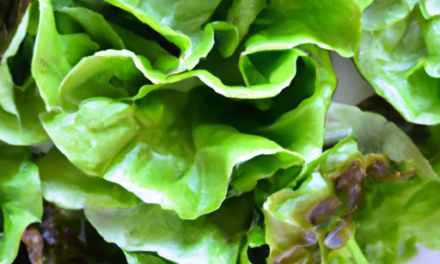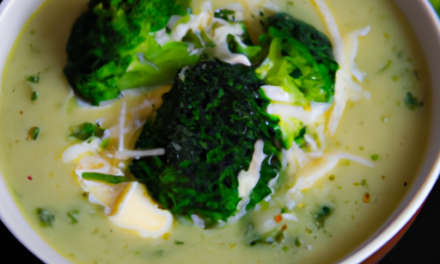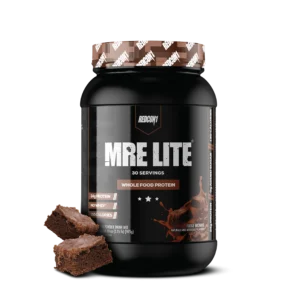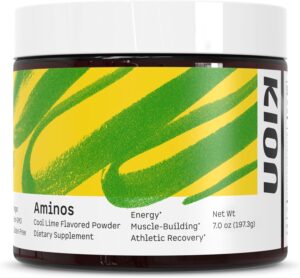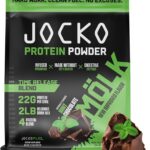
Cauliflower Crust Pizza

Are you trying to eat healthier but still have a craving for pizza? Look no further than Cauliflower Crust Pizza! This delicious alternative to traditional pizza is both satisfying and Paleo-friendly. With its unique use of cauliflower as a base, you can indulge in your favorite comfort food guilt-free. Whether you’re following a specific diet or simply looking for a nutritious twist on a classic, Cauliflower Crust Pizza is the perfect choice to help you reach your health goals without sacrificing flavor.
The Basics of Cauliflower Crust Pizza
What is Cauliflower Crust Pizza?
Cauliflower crust pizza is a delicious and healthier alternative to traditional pizza crust that is made using cauliflower as the main ingredient. Instead of using flour, the cauliflower is finely grated or processed into rice-like texture and mixed with other ingredients to create a dough-like consistency. This dough is then baked to perfection, resulting in a crispy and flavorful crust that can be topped with your favorite ingredients.
Why Choose Cauliflower Crust Pizza?
There are many reasons why cauliflower crust pizza is gaining popularity among health-conscious individuals. Firstly, it is a great option for those who are following a low-carbohydrate diet or trying to reduce their carb intake. Cauliflower is naturally low in carbohydrates, making it an ideal substitute for traditional pizza crust made with flour.
Secondly, cauliflower crust pizza is gluten-free, making it suitable for individuals with gluten sensitivity or those with Celiac disease. This allows people to enjoy a tasty pizza without the negative effects gluten can have on their health.
Additionally, cauliflower crust pizza is packed with nutrients. Cauliflower itself is rich in vitamins and minerals such as vitamin C, vitamin K, folate, and potassium. By using cauliflower as the base for the pizza crust, you can increase your vegetable intake and enjoy the health benefits it offers.
Lastly, cauliflower crust pizza also caters to those following a vegan lifestyle. By using plant-based ingredients, you can create a pizza that is both delicious and suitable for a vegan diet.
How is Cauliflower Crust Pizza Made?
The process of making cauliflower crust pizza begins with choosing the right cauliflower. Look for a firm and fresh cauliflower head without any brown spots or discoloration.
To prepare the cauliflower, remove the leaves and stem, and then wash it thoroughly. Cut the cauliflower into florets and either grate them using a box grater or process them in a food processor until it resembles rice-like texture.
Next, cook the cauliflower by steaming or microwaving it. Once cooked, allow it to cool before moving on to the next step.
To create the dough-like consistency for the crust, squeeze out any excess moisture from the cooked cauliflower using a clean kitchen towel or cheesecloth.
In a mixing bowl, combine the cauliflower with other ingredients such as eggs, cheese, and seasonings of your choice. Mix well until everything is combined and forms a dough.
Spread the cauliflower dough onto a baking sheet lined with parchment paper and shape it into a round or rectangular pizza crust using your hands or a spatula.
Bake the crust in a preheated oven until it becomes golden brown and crispy. Once the crust is ready, remove it from the oven and add your favorite pizza toppings. Return the pizza to the oven and bake until the cheese is melted and bubbly.
Now that you know the basics of cauliflower crust pizza, let’s explore its many benefits.
Benefits of Cauliflower Crust Pizza
Low in Carbohydrates
One of the main benefits of cauliflower crust pizza is its low carbohydrate content. Traditional pizza crust made from refined flour can be high in carbohydrates, which can lead to spikes in blood sugar levels and contribute to weight gain. By substituting cauliflower for flour, the carbohydrate content is significantly reduced, making it a suitable option for those following a low-carb or ketogenic diet.
Gluten-Free
For individuals with gluten intolerance or Celiac disease, finding gluten-free alternatives to their favorite foods can be a challenge. However, cauliflower crust pizza serves as an excellent gluten-free option. By using cauliflower as the base, there is no need for any wheat or gluten-containing ingredients, making it safe for those with gluten sensitivities to enjoy without any digestive discomfort.
High in Nutrients
Cauliflower itself is a nutrient-dense vegetable, packed with vitamins, minerals, and antioxidants. It is an excellent source of vitamin C, which supports immune function, and vitamin K, which contributes to healthy blood clotting. Additionally, cauliflower is rich in folate, which is important for cell growth and development, and potassium, which helps maintain proper heart and muscle function. By using cauliflower as the main ingredient in the pizza crust, you can increase your nutrient intake and support overall health and wellbeing.
Vegan-Friendly Option
For those following a vegan lifestyle, finding tasty and satisfying alternatives to meat and dairy can be a challenge. However, cauliflower crust pizza offers a vegan-friendly option that is both delicious and easy to make. By using plant-based ingredients for the crust and topping it with your favorite vegan cheeses and veggies, you can create a pizza that is both cruelty-free and full of flavor.
Now that you’re aware of the benefits of cauliflower crust pizza, let’s dive into some delicious variations.
Cauliflower Crust Pizza Variations
Margherita Cauliflower Crust Pizza
The classic Margherita pizza is a simple yet flavorful combination of tomato sauce, mozzarella cheese, and fresh basil leaves. By using a cauliflower crust as the base, you can enjoy this traditional favorite with a healthier twist. The cauliflower crust adds a delicious nutty flavor that complements the tanginess of the tomato sauce and the creaminess of the mozzarella perfectly.
Vegetable-loaded Cauliflower Crust Pizza
If you’re looking to increase your veggie intake, a vegetable-loaded cauliflower crust pizza is the way to go. Top your cauliflower crust with a variety of colorful vegetables such as bell peppers, onions, mushrooms, zucchini, and olives. You can also add some extra flavor by including roasted garlic or sprinkling some herbs and spices on top. This variation allows you to create a pizza that is not only delicious but also packed with vitamins, minerals, and fiber.
BBQ Chicken Cauliflower Crust Pizza
For those who enjoy the combination of sweet and tangy flavors, a BBQ chicken cauliflower crust pizza is a must-try. Top your cauliflower crust with a generous amount of tangy barbecue sauce, cooked and shredded chicken, red onions, and cilantro. The cauliflower crust provides a perfect base for the smoky and savory flavors of the barbecue sauce and the tenderness of the chicken.
Buffalo Cauliflower Crust Pizza
If you’re a fan of spicy buffalo wings and crave that fiery flavor, try a buffalo cauliflower crust pizza. Toss your cauliflower crust in buffalo sauce, then top it with mozzarella cheese, cooked and shredded chicken, red onions, and a drizzle of ranch or blue cheese dressing. This variation gives you the same zesty kick of traditional buffalo wings but in a healthier and vegetarian-friendly form.
Now that you have some delicious variations to choose from, let’s move on to some tips for making the perfect cauliflower crust pizza.
Tips for Making Perfect Cauliflower Crust Pizza
Choosing the Right Cauliflower
When making cauliflower crust pizza, it’s essential to choose a fresh and firm cauliflower head. Look for a cauliflower that is free from any brown spots or discoloration. The cauliflower should feel dense and heavy when picked up.
Properly Preparing the Cauliflower
Once you have chosen the right cauliflower, it’s time to prepare it for the crust. Start by removing the leaves and stem of the cauliflower head. Then, give it a thorough wash to remove any dirt or impurities.
Draining the Cauliflower
Properly draining the cauliflower is key to achieving a crispy crust. After cooking the cauliflower, whether by steaming or microwaving, it’s crucial to remove as much moisture as possible. Use a clean kitchen towel or cheesecloth to squeeze out the excess moisture. This step ensures that the crust bakes evenly and becomes crispy.
Adding the Right Binders
To help the cauliflower crust bind together, it’s essential to add the right ingredients. Eggs or egg whites are commonly used as a binder in cauliflower crust recipes. Additionally, cheese, such as mozzarella or parmesan, can be added not only for flavor but also to enhance the binding properties. Mixing the cauliflower with these ingredients creates a dough-like consistency that holds together during baking.
Now that you know how to make the perfect cauliflower crust pizza, let’s explore some delicious toppings you can try.
Toppings for Cauliflower Crust Pizza
Classic Tomato Sauce and Mozzarella
The classic combination of tomato sauce and mozzarella cheese is always a crowd-pleaser. Spread a generous amount of tomato sauce over your cauliflower crust and top it with shredded mozzarella cheese. You can also add some fresh basil leaves or other favorite herbs for added flavor.
Pesto and Goat Cheese
For a more gourmet twist, try topping your cauliflower crust with a dollop of flavorful pesto and crumbled goat cheese. The vibrant green pesto adds a burst of herbal freshness, while the tanginess of the goat cheese complements the cauliflower crust perfectly.
Barbecue Sauce and Chicken
If you’re a fan of tangy and smoky flavors, consider using barbecue sauce as the base for your cauliflower crust pizza. Top it with cooked and shredded chicken, sliced red onions, and a sprinkle of cheddar cheese. This combination creates a mouthwatering pizza that is sure to satisfy your barbecue cravings.
White Sauce and Spinach
For a creamy and satisfying option, try using a white sauce such as Alfredo or garlic sauce on your cauliflower crust. Top it with sautéed spinach, roasted garlic, and a sprinkle of mozzarella cheese. The rich and velvety white sauce pairs perfectly with the earthy flavors of the cauliflower crust.
Now that you have some tasty topping ideas, let’s move on to serving suggestions for cauliflower crust pizza.
Serving Suggestions for Cauliflower Crust Pizza
Pairing with a Salad
Cauliflower crust pizza pairs exceptionally well with a fresh green salad. The light and crispy texture of the pizza crust complements the crispiness of the salad leaves, creating a balanced and satisfying meal. You can opt for a simple garden salad or get creative with ingredients like arugula, cherry tomatoes, cucumber, and a drizzle of balsamic vinaigrette.
Adding a Side of Roasted Vegetables
To further enhance the vegetable goodness, serve your cauliflower crust pizza with a side of roasted vegetables. This adds an extra pop of flavor, texture, and nutrients to your meal. Roast vegetables like bell peppers, zucchini, eggplant, and cherry tomatoes with olive oil, herbs, and spices until tender and slightly caramelized. The roasted vegetables complement the cauliflower crust pizza and make for a well-balanced and nourishing meal.
Enjoying as a Snack or Appetizer
Cauliflower crust pizza also makes for an excellent snack or appetizer. Cut the pizza into smaller slices or bite-sized pieces and serve them at parties or gatherings. The crispy and flavorful crust, combined with delicious toppings, will be a hit among your guests.
Now that you know how to serve cauliflower crust pizza, let’s discuss how it compares to traditional crust pizza.
Cauliflower Crust Pizza vs Traditional Crust Pizza
Comparing Nutritional Values
When it comes to nutritional values, cauliflower crust pizza has some distinct advantages over traditional crust pizza. As mentioned earlier, cauliflower crust pizza is lower in carbohydrates compared to traditional crust pizza made with flour. This makes it an appealing choice for those looking to reduce carbohydrate intake or follow a low-carb diet. Additionally, cauliflower crust pizza is often lower in calories and fat content compared to traditional crust pizza, making it a healthier option overall.
Texture and Taste Differences
While cauliflower crust pizza offers a tasty and healthier alternative to traditional crust pizza, it does have some texture and taste differences. The cauliflower crust tends to have a slightly denser and chewier texture compared to traditional crust, which is usually more airy and fluffy. Additionally, the flavor of the cauliflower crust can be slightly nutty and earthy, which adds a unique twist to the overall taste of the pizza. These differences are often embraced by those who enjoy cauliflower crust pizza as a healthier and more flavorful option.
Now that we have compared cauliflower crust pizza to traditional crust pizza, let’s discuss its nutritional benefits in more detail.
Cauliflower Crust Pizza as a Nutritional Option
Lowering Carbohydrate Intake
For individuals looking to lower their carbohydrate intake, cauliflower crust pizza provides a satisfying alternative to traditional crust pizza. By substituting cauliflower for flour, the carbohydrate content can be significantly reduced while still enjoying the flavors and textures of a delicious pizza. This makes cauliflower crust pizza suitable for those following low-carb or ketogenic diets.
Increasing Vegetable Consumption
One of the significant benefits of cauliflower crust pizza is the increased vegetable consumption it provides. By using cauliflower as the base, you are incorporating a nutrient-dense vegetable into your meal. This allows you to increase your intake of vitamins, minerals, and antioxidants, contributing to overall health and wellbeing.
Meeting Dietary Restrictions
Cauliflower crust pizza also serves as an excellent option for individuals with dietary restrictions. Whether you are gluten-intolerant, following a vegan lifestyle, or have other dietary restrictions, cauliflower crust pizza offers a tasty solution. It allows you to enjoy a satisfying pizza without compromising your health or dietary needs.
Now, let’s address some common concerns that people may have about cauliflower crust pizza.
Addressing Common Concerns about Cauliflower Crust Pizza
Is the Crust Soggy?
One common concern about cauliflower crust pizza is that the crust may turn out soggy. While it is true that improper preparation or excess moisture can result in a soggy crust, following the right techniques can help achieve a crispy and sturdy crust. Thoroughly draining the cooked cauliflower and ensuring it is squeezed out to remove excess moisture is key to avoiding a soggy crust. Additionally, baking the crust at a high temperature and using parchment paper can help promote crispiness.
Does It Taste Like Cauliflower?
Another concern is whether cauliflower crust pizza tastes like cauliflower or if the flavor is overpowering. The good news is that when properly prepared and seasoned, the cauliflower flavor is subtle, and it mostly takes on the flavors of the toppings and seasonings used. The crust offers a slightly nutty and earthy taste that adds a unique twist to the overall pizza experience. Seasoning the cauliflower well and using flavorful toppings can help enhance the overall taste and minimize any cauliflower flavor.
Is It Time-Consuming to Make?
Making cauliflower crust pizza does require some preparation and cooking time, but it can be well worth the effort. While it may take longer than ordering a pizza for delivery, the satisfaction of enjoying a homemade and healthier version of a favorite food is priceless. Moreover, once you become familiar with the process and develop your own techniques, making cauliflower crust pizza becomes more efficient and less time-consuming. It can also be a fun and creative activity that you can involve your family or friends in.
Can It Be Reheated?
Yes, cauliflower crust pizza can be reheated and enjoyed the next day. However, it is important to note that reheating the pizza may slightly soften the crust compared to its freshly baked state. To ensure the best results when reheating, use an oven or toaster oven instead of a microwave. This method helps retain the crispness and texture of the crust while reheating the toppings evenly.
In conclusion, cauliflower crust pizza offers a delicious and healthier alternative to traditional pizza crust. It is low in carbohydrates, gluten-free, high in nutrients, and suitable for a vegan lifestyle. With its various topping options and serving suggestions, it can be enjoyed in a variety of ways. Whether you are looking to reduce carbohydrate intake, increase vegetable consumption, or meet specific dietary restrictions, cauliflower crust pizza proves to be a nutritional option. Despite some texture and taste differences, cauliflower crust pizza has gained popularity as a flavorful and satisfying pizza alternative. So, gather your ingredients, follow the tips, and get ready to enjoy a homemade cauliflower crust pizza that is both nutritious and delicious.





